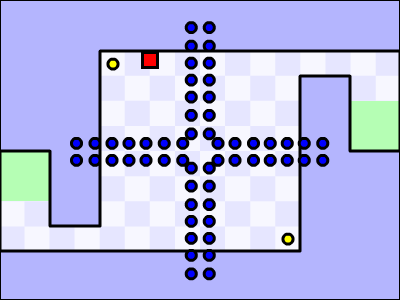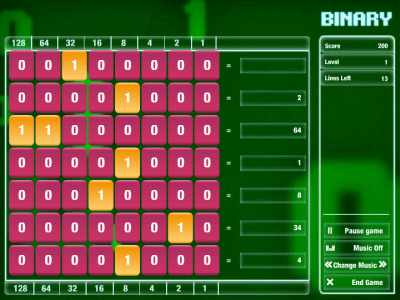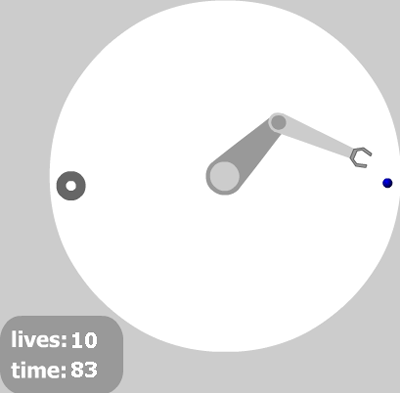'Graph Game' is a game that lets you check how well you understand neural networks

' Graph Game ' is a game in which you create a neural network structure using a graph. It is said to be a game that tests how well you understand 'neural networks,' which have become more common with the development of AI technology, so I tried playing it.
Graph Game - By Sabrina Ramonov
When you access the site, it looks like this. There are five stages available: 'RNN', 'LSTM Cell', 'GRU Cell', 'ResNet Block', and 'Deep RNN'. First, click on 'RNN'.
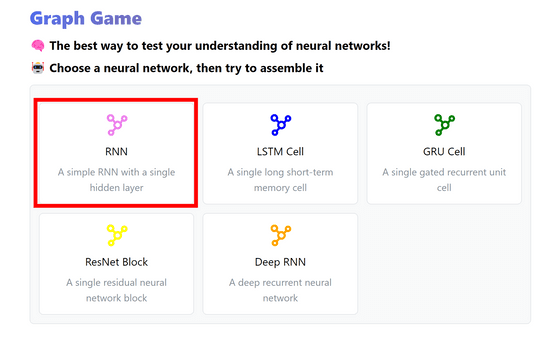
Three boxes, 'x_t', 'h_t' and 'y_t', appear. Each box represents data, with the top one being the output and the bottom one being the input. Click on the circle above 'x_t' and drag to connect it to the bottom of 'h_t'.
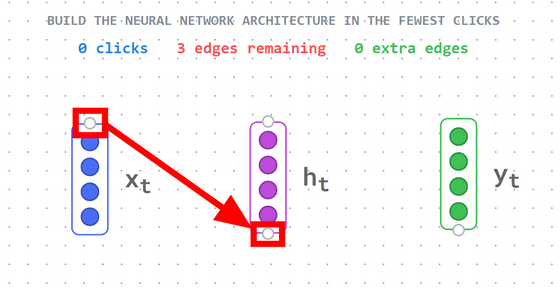
The connections are shown with green lines. There is no explanation of what 'x_t', 'h_t', and 'y_t' are, but based on the general usage of letters in such structural diagrams, 'x_t' should be the input, 'h_t' the hidden layer, and 'y_t' the output.
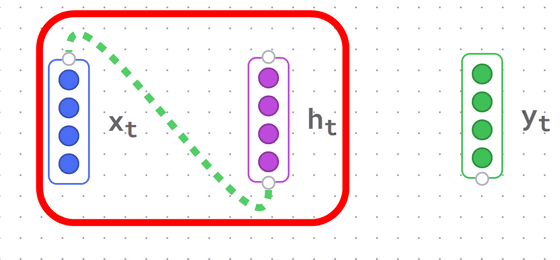
If you try connecting from 'x_t' to 'y_t', this time the connection will be a red line. This means that the connection is incorrect, and the top of the screen will say '1 extra edges.' You can disconnect it by clicking the red connection again.
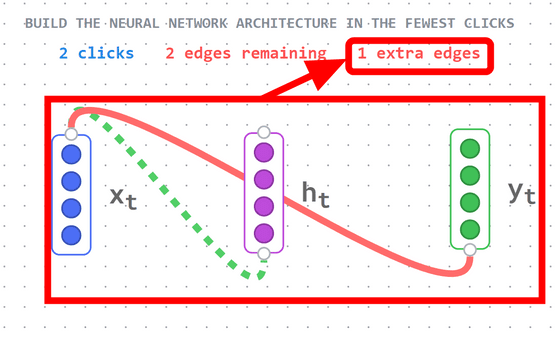
I connected 'h_t' to 'y_t' and thought that would clear it up...but then I got the message '1 edges remaining' (one connection missing).
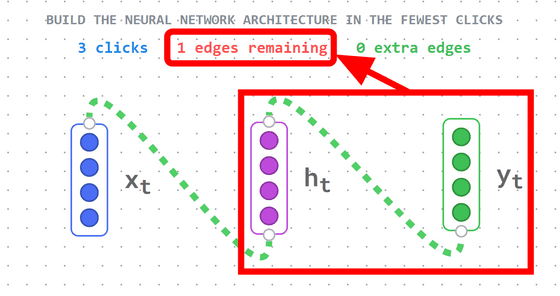
'Now that I think about it, there is no 'h_[t-1]' even though it is an RNN...?' I thought, but after thinking about it, I realized that it can be expressed by connecting the output of 'h_t' to the input. If all the connections are made correctly, the message 'Level solved!' will be displayed. Click 'Back to network selection' to return to the top page.
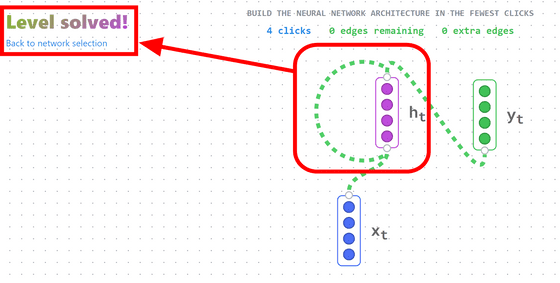
Next, click on “
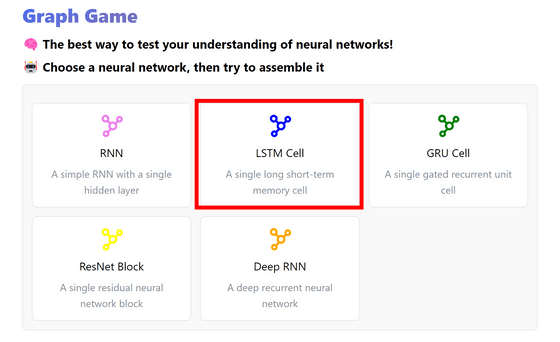
The difficulty level suddenly increased with 14 parts and 19 connections. Because there are so many parts, a mini-map showing the overall arrangement of the parts was displayed in the bottom right corner to prevent parts from being overlooked off-screen.
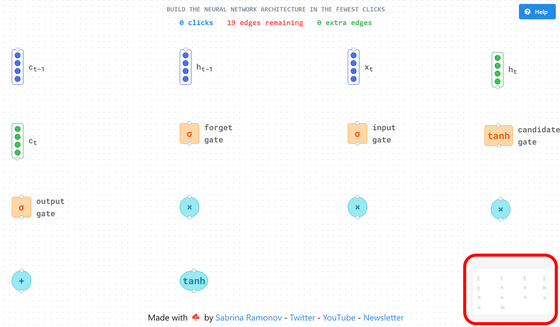
'I'm sure the previous hidden state 'h_[t-1]' and the input 'x_t' were connected to all the gates...' he thought, and first completed the input to the gates.
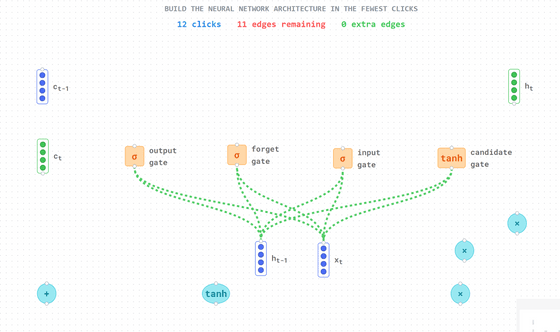
Despite making many mistakes in connecting the pieces, I managed to complete the other parts.
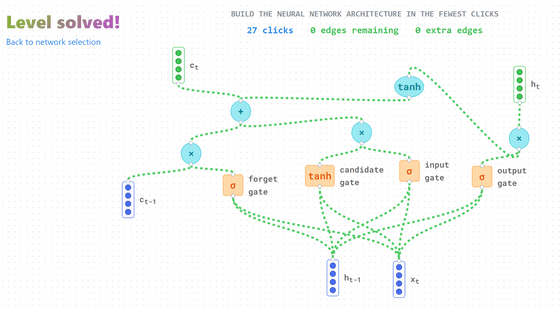
When reading papers and explanations, it's easy to think you understand it right away, but by actually connecting it yourself, you can uncover any ambiguities and gain a deeper understanding of neural networks. There are three other stages in addition to the one we played this time, so if you're interested, please give it a try.
Related Posts:




